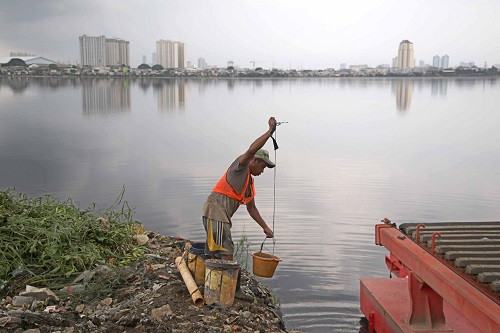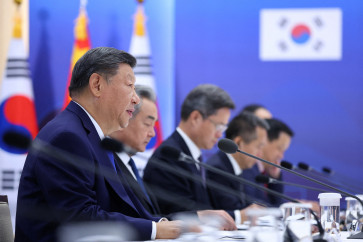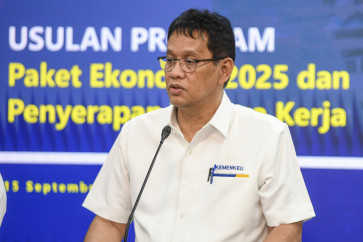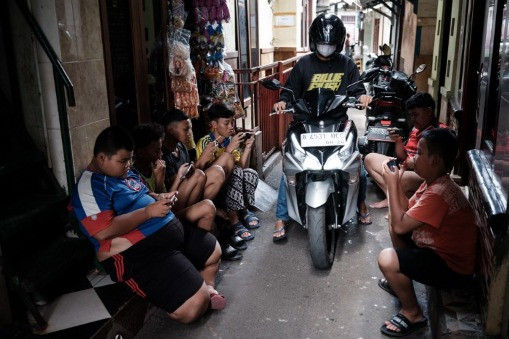Popular Reads
Top Results
Can't find what you're looking for?
View all search resultsPopular Reads
Top Results
Can't find what you're looking for?
View all search results[ANALYSIS] Growth strategies post the 2020 pandemic
Without demand, numerous businesses, including large industries and small and medium enterprises (SMEs), were either temporarily or permanently shut down, leading to many people losing jobs.
Change text size
Gift Premium Articles
to Anyone
T
he COVID-19 pandemic has pushed the economy into a recession. The GDP shrank 2.07 percent in 2020, the first economic contraction since the 1998-1999 Asian financial crisis. The pandemic forced the government to implement large-scale social restrictions to stop the virus spread. This halted public mobility, which led to deteriorated demand and thus severely damaged the supply side of the economy.
As spending was dragged down, headline inflation eased to 1.68 percent. Without demand, numerous businesses, including large industries and small and medium enterprises (SMEs) were either temporarily or permanently shut down, leading to many people losing jobs. Unemployment, hence, surged to 7.07 percent, the highest since 2011.
To counter the turmoil and minimize the pandemic’s impact, the government together with Bank Indonesia (BI) loosened fiscal and monetary policies by allowing the fiscal deficit to widen above 3 percent and lowering the benchmark interest rate to the lowest level ever. The government, furthermore, issued massive economic stimulus packages, covering COVID-19 mitigation and national economic recovery programs.
BI also helped finance the programs through its quantitative easing measure. These strategies along with later partial economic reopening, which still maintained some degree of restriction on community activities, showed a positive result. On a quarterly basis, GDP bottomed out from 5.32 percent year-on-year (yoy) contraction in the second quarter to 3.49 percent yoy and 2.19 percent yoy contraction in the third and fourth quarter, respectively.
The government and BI have stated that the expansionary fiscal and monetary policies will continue in 2021 to support and further accelerate economic recovery. In addition, the government has rolled out the COVID-19 vaccines, aiming to boost consumer confidence, thus expectedly increasing spending. However, the recovery progress going forward will still face hurdles.
The most challenging bottleneck in coping with this pandemic is how to maintain the recovery acceleration without increasing COVID-19 cases. It is because effective economic stimulus requires allowing the economy to reopen wider. The following are growth strategies the government may consider to bring the economy back to its initial growth path.
Flattening the COVID-19 case curve by encouraging mask wearing, maintaining good basic hygiene, physical distancing and massively scaling up COVID-19 tracing, testing and treatment is the priority step to accelerate the recovery. Speeding up the vaccination program is also a key measure to flatten the case curve, since it may help create herd immunity. The sooner it is achieved, the faster the nation can go back to the pre-pandemic growth level as the economy can safely reopen wider.


















